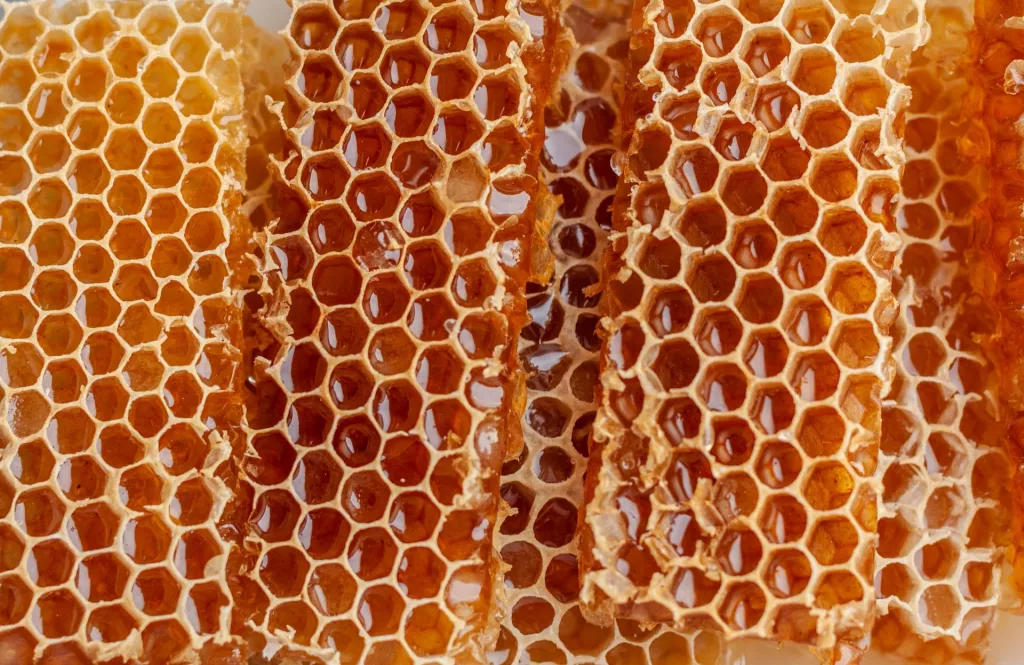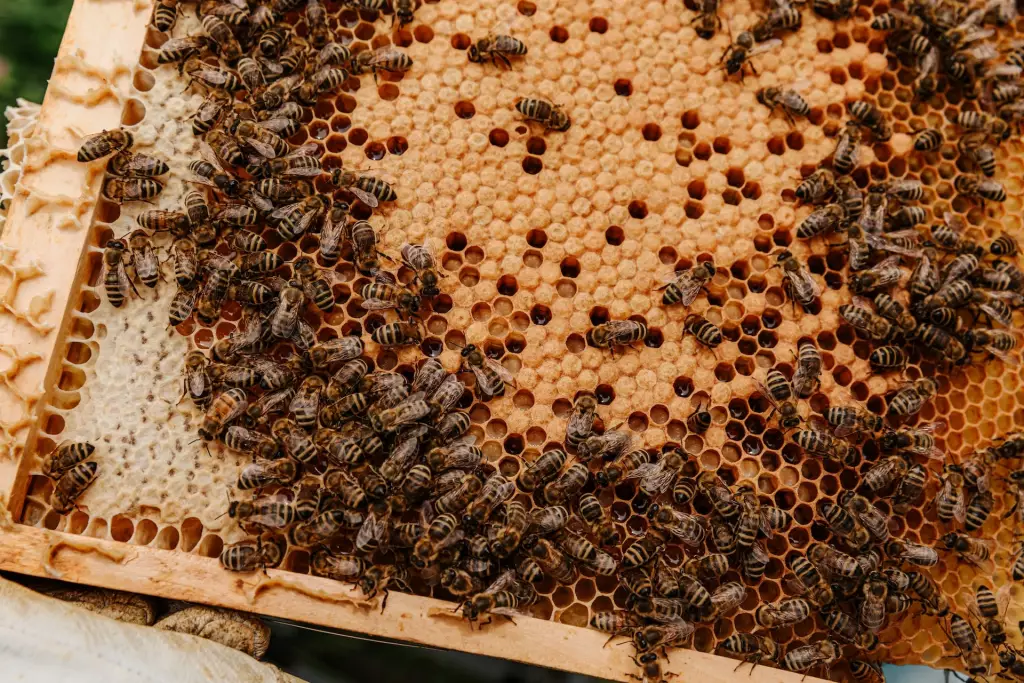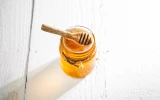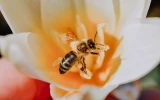How Much Honey Does a Beehive Make?
Many hobbyists decide to try beekeeping because of the allure that they can have their own steady source of honey in their backyard. But how much do hives actually make every year and why? Let's find out how crucial honey is to bees in this article.
A beehive can make anywhere between 25 to 50 pounds of surplus honey every year. This is a rough estimate that takes into consideration weather conditions, the health of the colony, and local flora.
For us, honey is a condiment that goes on pancakes or with tea. But for the bees, it's a matter of surviving through the winter. I'll explain how and why honey is so important for a colony, and what you can do as a beekeeper to ensure your bees produce enough every year.
Summary
- A beehive can make anywhere between 25 to 50 pounds of surplus honey every year.
- However, the colony will need to stockpile 40 to 90 pounds of honey to survive the winter.
- Weather conditions, size and strength of the colony, the local flora, and encounters with diseases or pests affect the amount of honey made.

On this page:
- How Do Bees Make Honey?
- How Much Honey Do Bees Make in a Day?
- How Many Times Can You Harvest Honey in a Year?
- How Many Hives Should I Start With?
- Can You Split a Hive and Still Get Honey?
- What Happens if You Don't Harvest Honey From Hives?
- How Much Honey Do Bees Need to Survive the Winter?
- Can You Harvest Honey at Night?
- Can Bees Make Toxic Honey?
How Do Bees Make Honey?
In a nutshell, forager bees collect nectar and pollen from the local flora. They bring it back to the hive, where the rest of the bees start processing the nectar with a combination of saliva and special enzymes. Once it is sufficiently dehydrated, the bees store it in cells, ventilate the honey a bit more, and then cap it after they are satisfied with the final product.
When they flap their wings to ventilate the honey, they also regulate the humidity levels in the hive and keep the honey from decomposing. It's a built-in mechanism used to prevent mold, fungi, or bacteria from growing.
Bees also produce other honey products you can process and sell to maximize your profits. I have a separate article that delves into the intricate process of making honey.
How Much Honey Do Bees Make in a Day?
Assuming the hive is operating at its best and maximizing the honey flow, the bees can produce around 10 pounds of honey in one day. That's an impressive feat, considering how one honey bee can only ever produce 1/12 of a teaspoon of honey throughout its entire life. It also means that to make roughly two pounds (one kilogram) of honey, a swarm of bees need to visit 2,700,000 flowers.
How Many Times Can You Harvest Honey in a Year?
Most apiaries harvest honey two to three times in a single year, between June and September. If you live in warmer climates, then bees may not need to prepare for winter as much. This gives them more time to produces and store honey, which means more honey harvests for you.

What affects the annual honey harvest?
First, honeybees need plenty of local flora nearby that can provide a strong source of nectar. Popular options include alfalfa, buckwheat, and clover. A strong rainfall prior to the flowers' bloom will help induce nectar flows, and plenty of warm, sunny weather encourages the flowers to secrete plenty of nectar. Since bees operate only when the sun is up, plenty of daylight will give them more time to forage.
On the bees' end, it's important for the colony to be strong and healthy, with a large population and plenty of space to store all their surplus honey.
But even when all the stars align, beekeepers need to stay vigilant for diseases, pests, and bee robbers. These are factors that could bring down the amount of honey in a hive.
How Many Hives Should I Start With?
Starting off with two hives is the best practice for new beekeepers. This gives novices the opportunity to compare behavior and patterns. It's easier to spot abnormal behavior and remedy a weaker hive by transferring bees from the stronger hive. And of course, two hives are not just an opportunity to fast-track your bee education; they're also a chance to harvest twice as much honey as well!
I have a more comprehensive guide on the number of hives for novice beekeepers here.
Can You Split a Hive and Still Get Honey?
Since the bees need to adjust to working in a different environment and with lesser numbers, it's best to split after the honey flow is over. Sometimes, splits aren't completely equal; some beekeepers are known for splitting a hive three ways, or 70-30 instead of 50-50. It's best to err on the safe side and give your (technically) new colonies some time to establish themselves before harvesting.
What Happens if You Don't Harvest Honey From Hives?
Any unharvested honey will be used to sustain the colony throughout the winter months. If they don't use it at all, then they just add to it in then next season. However, honey does take up space and this abundance of food could lead to a drastic increase in population. This could mean that the colony will outgrow its hive and start swarming.
If it reaches a point where there is far too much excess honey, it is possible that other bees, insects, and animals will try to steal from the hive as well.

How Much Honey Do Bees Need to Survive the Winter?
If you don't have harsh winters in your region, then a colony can get by on 40 pounds (18 kilograms) of honey. However, if you are experiencing a particularly severe chill, then they'll need up to 90 pounds (40 kilograms) to get by. These are just estimates; ultimately, it is good practice as a beekeeper to be conservative and to leave more honey with the bees than needed.
The bees will use this honey to feed themselves and maintain the energy to huddle together. This huddle is meant to retain heat and protect the queen. If you discover that they are running out of a honey supply in the middle of winter, you can give them supplemental feeding measures with sugar water and pollen patties so that they can hold on until the spring.
Can You Harvest Honey at Night?
You can harvest honey any time you want to. There is no specific time of day that beekeepers would say is the best for harvesting. However, the most common option is to take the trio between 11am and 3pm, which is the warmest part of the day and when the forager bees are out collecting nectar. This way, any bees left in the hive won't get chilly while you are in their hive and there are less bees, which reduce your likelihoods of getting stung.
Harvesting in this time frame is common and does have its advantages but if you need to adjust your schedule, then you can try the late afternoon or evening. While the forager bees will have made their way home by this time, all the bees are more subdued and generally easier to handle.
For some species of honeybee that are particularly violent, like the African honeybee, beekeepers can only harvest at night. This is the only time the bees are at rest and the beekeepers can approach the hives with ease.
Can Bees Make Toxic Honey?
Imagine feeling a massive sense of accomplishment at having completed your first honey harvest, only to discover that the honey you've painstakingly worked for is giving you some serious digestive problems. Honey can become poisonous if it was created from certain types of nectar and pollen, exposed to pesticides, or not dehydrated all the way and left to ferment. Interestingly, poisonous honey has played a central part in many culture for religious, traditional, or medical reasons.
For example, too much honey harvested from poppy plants have been found to contain traces of morphine. Honey can also become poisonous if the pollen used by bees came from flowers in the genera Rhododendron, Pieris, Agarista and Kalmia. These flowers contain grayanotoxins, which are harmful to humans but not to bees.
Overall, toxic honey sounds like something straight out of a mystery novel but it does exist. Luckily, the flowers that can produce it do not appear to be native to the United States.
Lastly, honey can also become poisonous if its water content is too high and it starts fermenting.



